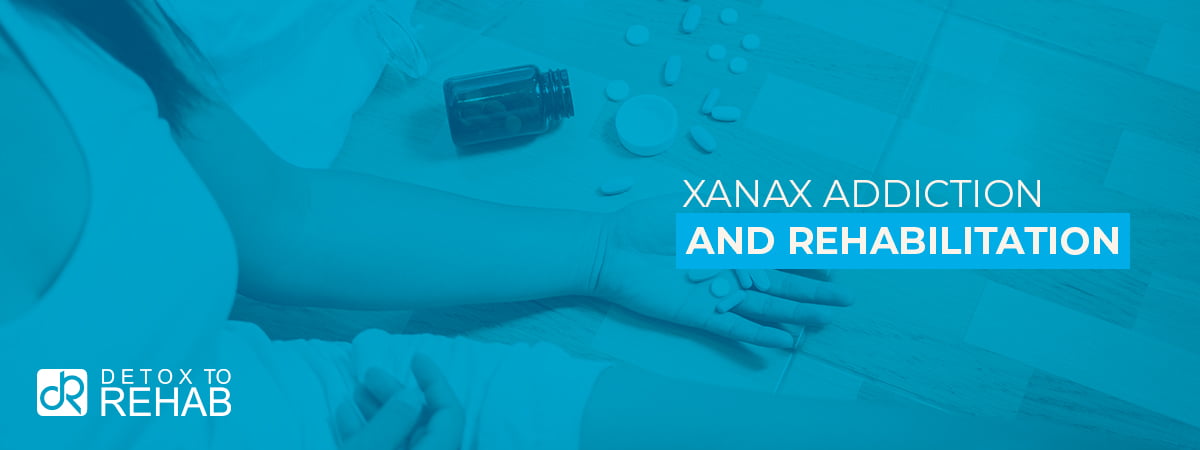

Xanax, also known by its street names “bars,” “planks,” “Zannies,” or “benzos”, is one of the most commonly prescribed anti-anxiety medications in the United States. While it helps millions manage anxiety and panic disorders, the drug also carries a dark side: addiction. This Xanax addiction guide will help you understand the symptoms, dangers, and recovery options for those struggling.
The risk is far greater than most people realize. According to the National Institute on Drug Abuse (NIDA), benzodiazepines like Xanax were involved in nearly 17% of all overdose deaths in 2021, often in combination with opioids. Many overdoses occur because people underestimate the strength of Xanax, mix it with other substances, or take more than prescribed.
As writer Johann Hari once said, “The opposite of addiction isn’t sobriety—it’s connection.” Understanding addiction and providing pathways to recovery can save lives and reconnect families.
Navigating This Guide
This hub page serves as the entry point for deeper exploration. Use the links below to dive into specific areas of Xanax addiction:
- Xanax
- Addiction
- Withdrawal
- Dependency
- Intervention
- Mental Health
- Overdose
- Short-Term Effects
- Long-Term Effects
- Signs & Symptoms
- Smoking
- Snorting
- Shooting
- Detox
- Rehab
Understanding Xanax Addiction
Xanax is a benzodiazepine that depresses the central nervous system. It slows brain activity to produce a calming effect, which makes it effective for anxiety and panic disorders. But this same effect is what makes it so addictive.
Xanax abuse treatment becomes necessary when people develop tolerance and dependence. What starts as one pill for anxiety relief can spiral into taking multiple bars a day, sometimes crushing and snorting them for a faster high. Street Xanax pills are often counterfeit, laced with fentanyl or other unknown substances, making them especially deadly.
Signs and Symptoms of Xanax Addiction
Recognizing the signs of Xanax misuse is critical for early intervention.
Behavioral signs include:
- Doctor shopping for multiple prescriptions
- Taking higher doses than prescribed
- Withdrawal from family and friends
- Sudden financial or legal problems
Physical and psychological signs include:
- Drowsiness and slurred speech
- Memory problems and confusion
- Poor coordination
- Intense cravings and anxiety when not using
- Seizures during withdrawal
Street names like “Z-bars” or “planks” are often used among teens and young adults, making it important for parents to be aware of the language.
The Dangers of Xanax Addiction
The dangers of Xanax addiction extend far beyond dependence.
- Overdose risk: High doses can cause respiratory depression, coma, or death.
- Memory loss: Long-term users often report blackouts and cognitive decline.
- Mental health: Anxiety, depression, and suicidal thoughts increase when dependency sets in.
- Accidents: Impaired coordination leads to higher rates of car crashes and falls.
- Counterfeit pills: Many “Xanax” bars sold on the street contain fentanyl, greatly increasing overdose risk.
According to the CDC, over 92,000 drug overdose deaths were reported in 2022, and a growing portion involved benzodiazepines like Xanax.
The Dangers of Mixing Xanax with Other Substances
One of the deadliest aspects of Xanax abuse is mixing it with other substances. Many overdoses involve polysubstance use.
- Xanax and alcohol: Both depress the central nervous system, slowing breathing and raising the risk of blackouts and death.
- Xanax and opioids (like heroin or fentanyl): This is one of the most lethal combinations. Opioids slow breathing while Xanax intensifies sedation, often leading to fatal respiratory failure.
- Xanax and stimulants (like meth or cocaine): People may combine to “balance” the effects, but the body becomes dangerously confused, risking seizures or heart attack.
- Xanax and other benzos: Taking multiple benzodiazepines multiplies the risk of overdose and cognitive decline.
Research shows that over 85% of benzodiazepine-related overdose deaths also involve opioids, making this combination especially deadly.
A True Story of Hope
Treatment Options for Xanax Addiction
Breaking free from Xanax addiction is difficult, but with the right treatment, recovery is within reach.
Treatment options include:
- Medical detox: Because withdrawal from Xanax can cause seizures and panic attacks, medical supervision is essential.
- Inpatient rehab: Structured environments offer therapy, peer support, and relapse prevention.
- Outpatient rehab: Flexible treatment while maintaining work or school responsibilities.
- Therapy and counseling: Cognitive Behavioral Therapy (CBT) helps patients retrain thought patterns and coping skills.
- Dual diagnosis treatment: Many struggling with Xanax addiction also face anxiety, depression, or PTSD. Treating both is crucial.
- Aftercare support: Peer groups, sober living, and ongoing therapy help maintain sobriety.
How Families Can Help
Families play a vital role in supporting recovery. Open conversations, compassion, and encouraging professional help can make all the difference. Stigma often prevents people from reaching out, so loved ones should provide non-judgmental support.
Practical steps include:
- Learning the signs of Xanax abuse
- Encouraging treatment and offering to attend therapy sessions
- Removing access to unprescribed medications
- Creating a safe, supportive environment for recovery
Finding Hope and Moving Forward
Addiction to Xanax doesn’t have to be the end of the story. With professional care, strong support systems, and commitment, people can recover and live full, meaningful lives.
If you or someone you love is struggling with Xanax, call the SAMHSA National Helpline at 1-800-662-HELP for confidential treatment referrals.
Recovery is not only possible—it’s happening every day.








